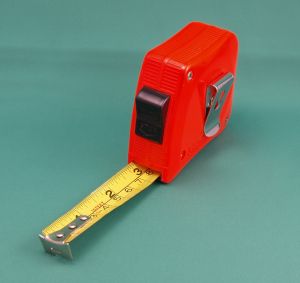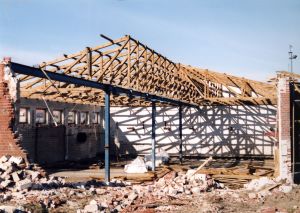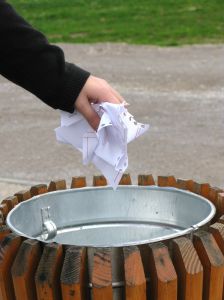What a New York Business Should Know About Recovering for Damage to its Property (III)
 We have been discussing how much a New York business can recover from someone who damages its property. If the property is damaged, but not destroyed, the business normally can recover either the loss in market value caused by the damage, or the cost of repairs, whichever is less. See Fisher v. Qualico Contracting Corp., 98 N.Y.2d 534, 539 (2002). See Gass v. Agate Ice Cream, 264 N.Y. 141, 143-44 (1934). If the property is totally destroyed, it can recover the reasonable market value of the property just before it was destroyed. See Gass v. Agate Ice Cream, 264 N.Y. 141, 143-44 (1934). If the destroyed property is a business’ sales inventory, the business normally can recover the wholesale cost of the merchandise, because that is what it would cost to replace the merchandise, and any damages actually sustained by reason of the absence of the articles while they are being replaced. See Dubiner’s Bootery, Inc. v. Gen. Outdoor Adver. Co., 10 A.D.2d 923 (1st Dept. 1960). These rules seem intrinsically fair because each will put the business back to where it was before the loss.
We have been discussing how much a New York business can recover from someone who damages its property. If the property is damaged, but not destroyed, the business normally can recover either the loss in market value caused by the damage, or the cost of repairs, whichever is less. See Fisher v. Qualico Contracting Corp., 98 N.Y.2d 534, 539 (2002). See Gass v. Agate Ice Cream, 264 N.Y. 141, 143-44 (1934). If the property is totally destroyed, it can recover the reasonable market value of the property just before it was destroyed. See Gass v. Agate Ice Cream, 264 N.Y. 141, 143-44 (1934). If the destroyed property is a business’ sales inventory, the business normally can recover the wholesale cost of the merchandise, because that is what it would cost to replace the merchandise, and any damages actually sustained by reason of the absence of the articles while they are being replaced. See Dubiner’s Bootery, Inc. v. Gen. Outdoor Adver. Co., 10 A.D.2d 923 (1st Dept. 1960). These rules seem intrinsically fair because each will put the business back to where it was before the loss.
A business also can try to recover for damage to its property by making a claim under the property coverage of its business owner’s insurance policy. If the policy covers the type of property that was damaged, the damage was caused by something the policy insures against, and the insured otherwise has lived up to its obligations under the policy, the business owner should be able to recover for the damage to its property. The amount the business can recover depends on the language of the policy. It might be able to recover only the actual cash value of the property. One way to determine that is replacement cost minus depreciation. It might be able to recover the replacement cost of the property, without deduction for depreciation. For the destruction of sales inventory, it might be able to recover the sales price of that inventory, if it has purchased the proper coverage. Sometimes, an insurance policy, depending on how it is written, might reimburse the business for its lost income. Even then, however, the business should be aware that it cannot recover both the retail selling price of the damaged inventory and the income it would have earned by selling that same merchandise.
This is illustrated by J & R Electronics Inc. v. One Beacon Ins. Co., 35 A.D.3d 169 (1st Dept. 2006). The case involved J&R Electronics, an electronics retailer in Manhattan that was badly damaged as a result of the terrorist attacks in New York City on September 11, 2001. As a result, it made a claim to recover, under its policy of property insurance with One Beacon Insurance Company, for, among other things, the damage to its merchandise, and for its loss of business income. Pursuant to the terms of the policy, One Beacon paid J&R the selling price minus unincurred expenses for the damaged merchandise. That basically means that J&R was paid the selling price minus the money it normally would have spent in order to sell the merchandise. When One Beacon paid J&R’s claim for loss of business income, it subtracted the amount it paid J&R for the sales price of the damaged merchandise. J&R objected to this, claimed the sales price should not be subtracted from its lost income, and sued. The appellate court held that J&R could not recover both the selling price of the merchandise and the lost income based on its failure to sell that same merchandise; to do so would have been to give J&R a double recovery.
 New York Business Lawyer Blog
New York Business Lawyer Blog


 A business has to know how to recover for damage to its property. Most times it will need to use the money to repair or replace the damaged property or, in the most severe cases, to re-start the business.
A business has to know how to recover for damage to its property. Most times it will need to use the money to repair or replace the damaged property or, in the most severe cases, to re-start the business.  Everyone knows that if someone damages their property, they should be able to make that person pay for the damage. The Owner of the damaged property should be able to recover as long as it can prove the other person was liable for the damage. Many people, however, including business owners, are unclear about how much they can recover, and what they need to do in order to recover.
Everyone knows that if someone damages their property, they should be able to make that person pay for the damage. The Owner of the damaged property should be able to recover as long as it can prove the other person was liable for the damage. Many people, however, including business owners, are unclear about how much they can recover, and what they need to do in order to recover.  We have been discussing what records a New York Business should keep on file when it is faced with litigation: Records that are relevant to whether it should win or lose the dispute, and any records that could lead to such evidence. We also have spoken briefly about the different penalties that can be imposed for failing to preserve those records. For the most part, they consist of making it harder to win the dispute once a lawsuit has been commenced. Now we are going to analyze the legal requirements for imposing sanctions on the party that fails to save relevant evidence when it has a duty to preserve the evidence.
We have been discussing what records a New York Business should keep on file when it is faced with litigation: Records that are relevant to whether it should win or lose the dispute, and any records that could lead to such evidence. We also have spoken briefly about the different penalties that can be imposed for failing to preserve those records. For the most part, they consist of making it harder to win the dispute once a lawsuit has been commenced. Now we are going to analyze the legal requirements for imposing sanctions on the party that fails to save relevant evidence when it has a duty to preserve the evidence.  In our last post we asked the question: What records does a business have to keep when it is, or it reasonably believes it will become, involved in litigation? The answer is, generally, that a business must preserve records and documents which support its claims, or support defenses against its claims, or which might lead to discoverable evidence. See Zubulake v. UBS Warburg LLC, 220 F.R.D. 212 (S.D.N.Y. 2003). That is, it must keep records that could help it or hurt it, or which might lead to other evidence that could help it or hurt it, in the dispute/litigation. If the business does not save those records, it can be penalized for “Spoliation.”
In our last post we asked the question: What records does a business have to keep when it is, or it reasonably believes it will become, involved in litigation? The answer is, generally, that a business must preserve records and documents which support its claims, or support defenses against its claims, or which might lead to discoverable evidence. See Zubulake v. UBS Warburg LLC, 220 F.R.D. 212 (S.D.N.Y. 2003). That is, it must keep records that could help it or hurt it, or which might lead to other evidence that could help it or hurt it, in the dispute/litigation. If the business does not save those records, it can be penalized for “Spoliation.”  What records does a business have to keep and for how long? That may seem simple enough to answer, but it isn’t. It depends on the situation. There are rules governing tax records; rules for certain kinds of licensed professionals; and rules for when a business becomes involved in litigation. We’re going to talk about a business involved in litigation. What makes that so important is that the same rules often apply even before anyone has been sued.
What records does a business have to keep and for how long? That may seem simple enough to answer, but it isn’t. It depends on the situation. There are rules governing tax records; rules for certain kinds of licensed professionals; and rules for when a business becomes involved in litigation. We’re going to talk about a business involved in litigation. What makes that so important is that the same rules often apply even before anyone has been sued.